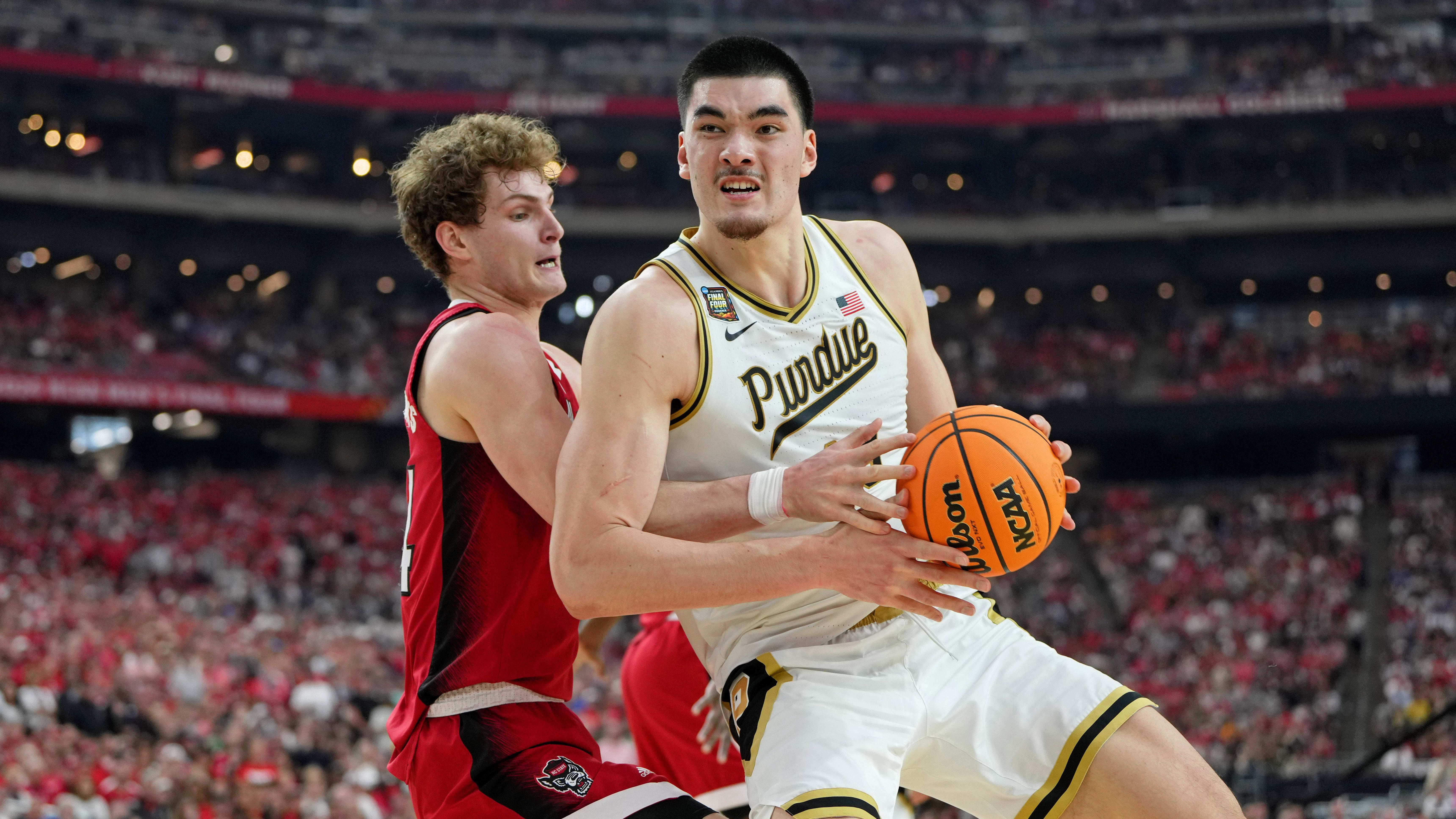


There was a time not too long ago when Zach Edey would have been a sure-fire top pick in the NBA Draft.
The 7-foot-4 Canadian big man has had the kind of collegiate career NBA scouts used to fawn over. He’ll almost certainly be the first two-time Player of the Year award winner since Ralph Sampson in 1983 and there’s an argument to be made that Edey is among the greatest collegiate men’s basketball players in modern history.
And yet, when the NCAA tournament began Edey was viewed as a late first-round pick or early second-round pick. Even with his Purdue Boilermakers playing in the National Championship game Monday night, there’s still nobody talking about Edey as potentially going at No. 1.
Why?
Put simply, the NBA is just different. For all the success Edey has had in college, the modern NBA game is a totally different beast. Few teams play with the kind of slow and methodical offense Purdue and Edey have found success with. These days, it’s about pace and space on both ends of the court.
“It’s a lot of spacing, a lot of quickness, a lot of one through five (guarding), pick-and-roll. You’ve got to be able to be out on the perimeter, move your feet, all of that,” Toronto Raptors center Kelly Olynyk said Monday.
That’s where Edey struggles.
He’s dominant in the paint, averaging 24.9 points per game on 62.5% shooting, but he’s attempted just one three-point shot in his collegiate career. More alarming is his defense. While his height and 300-pound weight will certainly translate to the next level at the rim, there are understandably questions about how he’ll be able to defend in space when speedy guards try to pull him out to the perimeter and take advantage of his relatively slow-moving feet.
“It’s just less teams that like playing with a traditional big center, even if you are very efficient in the paint because of the importance of the three ball and the importance of being able to switch on the defensive end,” said Garrett Temple who came into the league in 2009, the year the 7-foot-3 Hasheem Thabeet went second overall to the Memphis Grizzlies.
But the NBA is just about advantages.
When one team finds success with small ball, the league follows until someone finds a better way to win. Then the copy-cat cycle begins again.
“I think about JB Bickerstaff playing big in Cleveland, you know, even when they had Lauri Markkanen, they had three seven-footers starting and they did what they did,” Temple said. “So it’s definitely about having the gall (to pick Edey) because we know he can play, we know he can move, he’s improved every year.”
Edey does have some experience playing against NBA competition. He briefly appeared for Team Canada this past summer at the FIBA World Cup and his development over the years caught the attention of Olynyk who joined Edey off the bench for the senior men’s national team.
“His body has improved, his speed, his balance, quickness. His strength, his functional strength has improved, skill. For me, a lot of it is his IQ has improved,” the Canadian center said. “He’s a really good player, obviously he’s a force down low, on the glass, in the paint, blocking shots. He really alters the dynamics of the game.”
The Oklahoma City Thunder would make sense for Edey in the middle of the first round, Temple said. They’ve got all the shooting and playmaking a team could ask for but don’t quite have the type of supersized big man to pair with Chet Holmgren in certain matchups against other Western Conference teams.
What happens, for example, when the Thunder play the Denver Nuggets and Nikola Jokic or the New Orleans Pelicans and Jonas Valanciunas?
For the Thunder, a team with multiple future first-round picks and a boatload of current young talent, maybe it’s worth the risk. Maybe having a 7-foot-4 prospect as a change-of-pace or situational big man makes sense in certain matchups even if he’s more of an old-school type of big man.
“There’s definitely a spot for him,” Olynyk said. “You need size to guard certain people situationally. He’s gonna be a force, a load on either end of the floor, no matter what you do. You can run schemes to make it work. It’s just how dedicated you are to it.”
The Raptors already have two centers locked into contracts next year with Olynyk having signed an extension and Jakob Poeltl under contract for at least the next two seasons. It makes a fit for Edey in Toronto a little awkward, especially with Poeltl being a more traditional center as well.
But it’s possible Toronto comes away from the draft lottery with two first-round picks, not to mention the 31st pick courtesy of the Detroit Pistons. That could make adding a relatively risky prospect like Edey enticing. He’d give the organization the type of young developmental center whose timeline pairs more exactly alongside Scottie Barnes, Immanuel Quickley, and RJ Barrett.
“It’s gonna be interesting to see,” Temple said. “I’m glad I’m not a GM that’s drafting.”